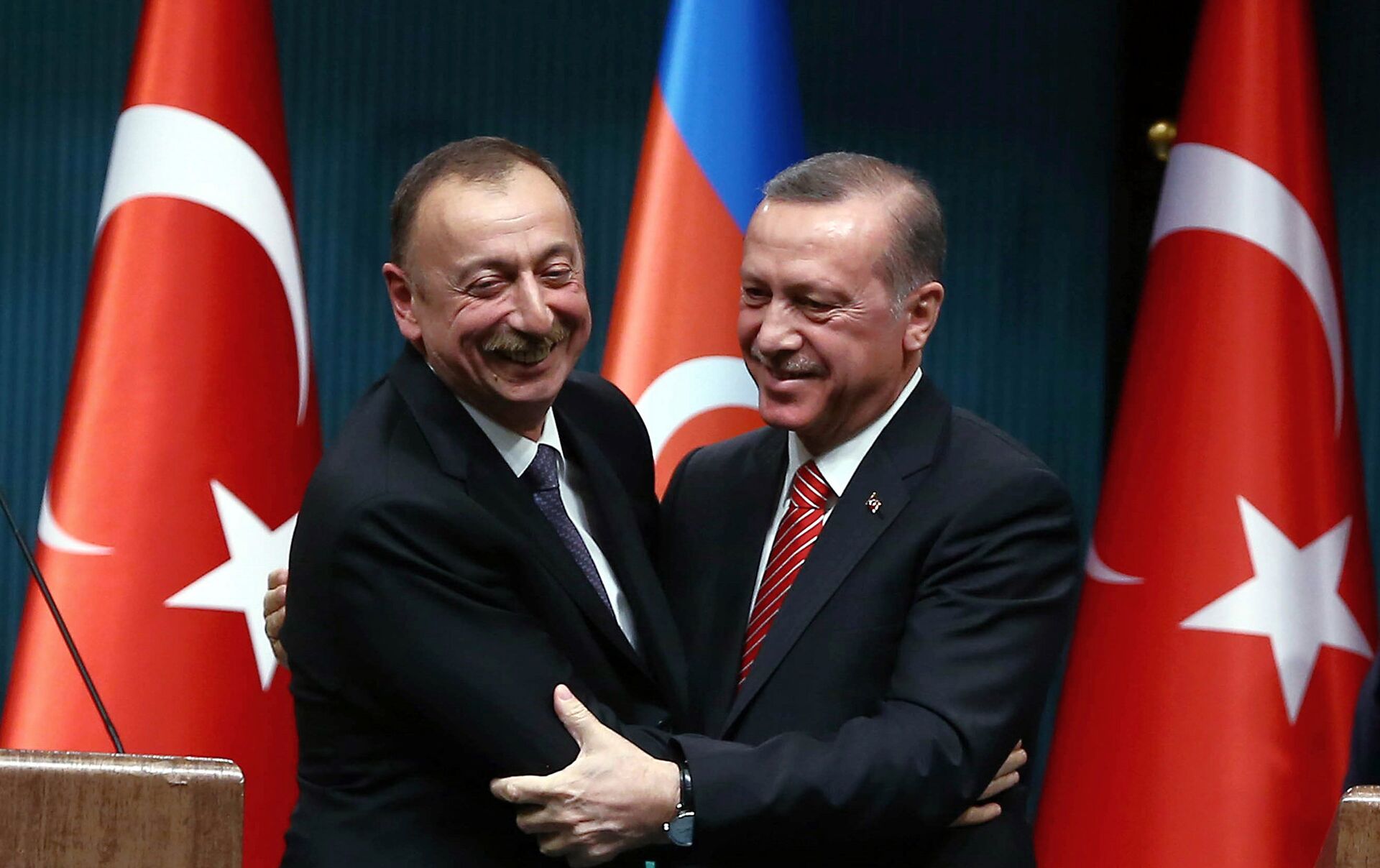Why is Armenia facing a demographic crisis?
Armenia has five years to go before it has to register a declining population – the stage when the mortality rate exceeds the birth rate.
“This year, for the first time in history, depopulation was recorded in the Lori region – the mortality rate exceeded the birth rate by 90.
“At the republican level, we have not yet entered the stage of depopulation, but if nothing is done, then in four to five years, according to UN forecasts, the mortality rate will exceed the birth rate throughout the country,” said Tsovinar Harutyunyan, Executive Representative of the United Nations Population Fund in Armenia.
• Pregnancy without a husband: going it alone without a husband
This, according to experts, is largely due to the fact that now the generation born in the 1990s is entering the age of marriage.
These were the most difficult years in the modern history of Armenia. There was a war, the country was in a blockade, the economy was in a crisis. In this situation, very few allowed themselves to have children.
Accordingly, the generation of the 90s is 40 percent less than those born in the 1980s. And this cannot but affect the number of marriages and birth rates now.
Moreover, 20-25 percent of the 1990s generation emigrated from Armenia.
Another reason behind the country’s worrisome depopulation is that young men do not want to marry and take responsibility for their families.
Moreover, among the 20-40-year-olds, the demographic balance is skewed – there are 60,000 men are missing from the country. The main reason is emigration.
G
urgen Magakyan is 33 years old. He and his family left Armenia while still a schoolboy. He lives in Moscow and is not yet married.
“Armenia has a difficult socio-economic situation. I do not think that I will return to live in my homeland. Here I make money easier, but I hope that I will marry at least an Armenian. My brother has already married a Russian girl,” he says.
Artak Markosyan, head of the demography department of the Ministry of Labor and Social Affairs, believes that emigration left a heavy mark on Armenia, as people of reproductive age have left the country:
“In 1992-2002, the decline in fertility in our country amounted to 60 percent. By the way, this was the highest rate in post-Soviet countries. Over 10 years, the number of births decreased from 70,000 to 32,000. Emigration and the lack of a demographic strategy for 27 years distorted the situation.”
A
nahit Margaryan is 58 years old, she is a seamstress. She says her son is 31 years old, her daughter 36, but they are not going to start a family:
“My son says that it is impossible to support a family, raise children on his salary. Young people are concerned about the economic situation in the country. My daughter was educated, works, but cannot find a husband. And I still dream of grandchildren…”
According to the statistics committee, the resident population of Armenia as of January 1, 2019 is 2.965 million. Compared to last year, this figure is 7,600 people less.
• In 2018, 36,502 children were born in Armenia;
• in 2017 – 37,700;
• in 2016 – 40,592.
Total fertility rate:
• in 2019 amounted to 1.6,
• in 1994 – 2.2,
• in 1969 – 3.3.
Financial incentives only temporarily increase fertility
For many years, the Armenian government did not invest in improving the demographic situation. After giving birth, mothers were given three thousand drams [about $6].
The government began to think about the need to stimulate the birth rate only after 2010.
• 50 thousand drams [about $100] at the birth of the first and second child;
• 1 million drams [about $2,060] for the third and fourth children;
• 1.5 million drams [about $ 3,090] for the fifth and each subsequent child.
In addition, for two years, working mothers were given a monthly childcare allowance, which finally increased from three to 18 thousand drams [about $37]. And since 2016, benefits were provided to non-working mothers – in the form of a single payment of 126,600 drams [about $485].
However, an analysis of the birth rate in recent years suggests that these measures were not enough to change the situation.
L
ilit Petrosyan is a young and successful IT specialist. She says:
“I cannot refuse my salary of 300,000 [about $620] and stay at home. For my husband it will be very hard. On his salary alone we will not be able to live. The child is still very small, but in two months I will go to work, maybe my mother will look after the baby, I don’t know. And so you just have to stop thinking of a second child.”
Executive Representative of the UN Population Fund Tsovinar Harutyunyan believes that the problem in Armenia is not that people think about the birth of a third or fourth child, but the reluctance to start a family.
Among youth, the unemployment rate is high, and few decide to marry. And according to Armenian traditions, you must first create a family and only then have children. As for the number of children, Tsovinar Harutyunyan says:
“Our studies show that many want three children, but have one or two. Among the expectations from the state, improvement of living conditions, growth in the number of jobs with sufficient wages are usually called, in third place is the combination of family and career.”
According to Armenian traditions, a woman has always been responsible for everything in the house, and a man was responsible for what was outside, says Mher Manukyan, UN Communications Fund communications officer. But this model has long been unacceptable:
“People do not have apartments, they need to take a mortgage, pay these amounts, live, have a child, support him and think about the following. This is a heavy burden, not everyone will boldly and fearlessly take on this social burden. We should make it as easy as possible.”
N
arek Martirosyan is an accountant, he is 30 years old. He lives with his family in a rented apartment in Yerevan. He says that his son is three years old and he goes to kindergarten so that his wife can also work:
“We left our father’s house, where my brother and his family remained with their parents. For our one-room apartment we pay 70,000 drams [about $144]. Well, my son grew up – and my wife went to work. How, in such conditions, can we even think of a second child? We don’t have a house, salaries are low and we can’t buy an apartment on a mortgage, we can’t pay the debt. And we dream of having two more children.”
International experience is an example for Armenia
The population fund of the UN Armenian office is studying international experience and periodically provides the Armenian government with information on how to solve demographic problems in other countries.
“The Netherlands, Austria, England realized that it’s very difficult to switch from a model of two breadwinners to a model of one. They took the ‘breadwinner model’: a man working full time, and a woman takes half a day. When women were given the opportunity to return to the labor market after childbirth, many returned, but part-time. So they could already solve the issues of family and child care, without giving up their career. Armenia also needs to revise the maternity leave model for women,” said Tsovinar Harutyunyan.
The coordinator of the UN project Population and Development Anna Hovhannisyan says:
“The total fertility rate in a number of countries from 1.5 – as it is now in Armenia – managed to rise to almost a simple reproductive level, that is, to almost two. In these countries, expenditures from GDP for demographic projects were doubled and tripled.”
The highest level was provided in Sweden and France. In particular, this was possible in Sweden, because women no longer had a choice – family or career. For this, an extremely attractive model of joint parental leave was created.
“They tried to return the fathers to the family, and now they share home and parental obligations. The couple is given 480 days of maternity leave, of which 90 days are given to each, the parents can divide the remaining 300 days among themselves. 30 days they can rest together.
For the first 300 days, the state pays the equivalent of 110 dollars. Then financial support is reduced. The optimal period of maternity leave is six months, and parents should receive at least 60-70 percent of their salary. Such a model will be attractive for both fathers and mothers,” the expert said.
The number of women on maternity leave this year in Armenia was 12,500.
In 2018, 10.16 billion drams [about $21 million] were allocated from the state budget to provide 140-day paid leave for working mothers and a one-time allowance for those who do not work.
As of January 1, 2019, 6004 families with four or more children were registered in the system for assessing family vulnerability.
About 27,000 children live in these families.
Armenian legislation allows fathers to take parental leave, but in Armenia mothers prefer to take it.
“In the whole world where it has been possible to increase the birth rate, fathers were actively involved in the process of caring and raising children, which allowed mothers to return to work,” says Anna Hovhannisyan.
In Armenia, both spouses enter the labor market, share the labor burden. But the wife continues to bear the “home” load – household chores, childcare.
“The experience of European countries shows that when this load is partially removed from women and assigned to men, this becomes an additional incentive for women to give birth to their next child. I don’t know if any legislative initiative will help in Armenia, because we still have the opportunity for fathers to take maternity leave. If something changes in the mentality, it will actually help,” says Mher Manukyan, UN Responsibility Fund Communications Officer.
Now the government has created a council to improve the demographic situation.
“The processes are moving, we have offered the government new solutions and steps. The demographic policy should include a complete package – we need to offer people economic and legislative incentives, as well as carry out serious awareness work,” says Artak Markosyan, head of the demography department of the Ministry of Labor and Social Affairs.


















